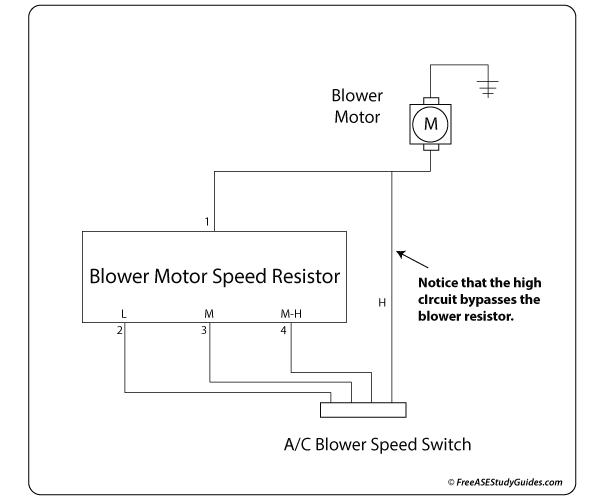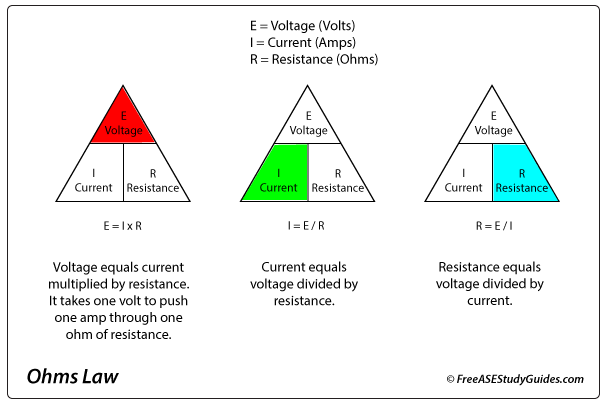Blower Motor Resistor Testing

An A/C blower motor resistor uses resistance to control the blower motor's speed. Many blower resistors control the current to the blower motor at all speeds except high. The resistor is bypassed at high speed, and power is fed to the motor directly from the switch.

Above is a typical blower resistor; manufacturers' specifications and test procedures vary.
- Place one lead of the ohmmeter on terminal 1 of the resistor.
- Place the other lead on terminal 2 and check against specifications. The blower resistor must be replaced if this circuit displays infinity on the ohmmeter (open).
- Move the lead from terminal 2 to 3 and check this reading against specifications. If this circuit is open, the blower resistor must be replaced.
- Move the lead from terminal 3 to terminal 4 and check this reading against specifications. If this circuit is open, the blower resistor must be replaced.

This is an example of how resistance and current work in a circuit. The resistance gradually decreases, and the current increases as the resistor moves from Low to Medium to Medium-High. This increase in current as the resistor moves toward higher speeds increases the blower motor's speed. Remember, resistance and current are proportional. Lowering resistance in a circuit increases the current and vice versa.